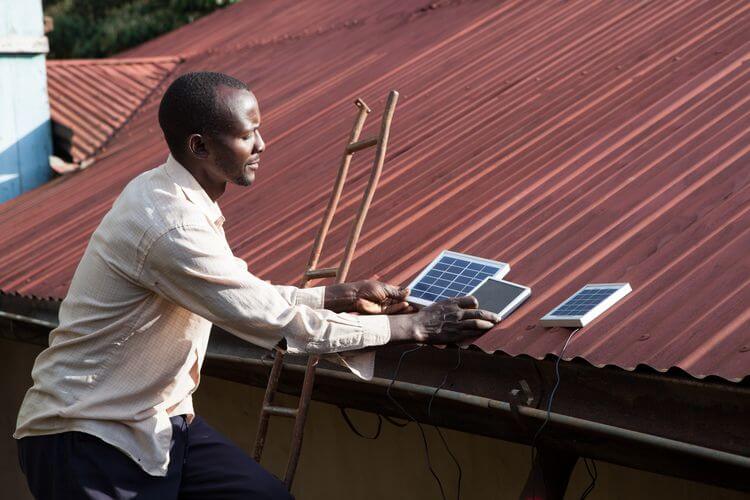In the run up to the much anticipated Ashden Awards 2016 on Thursday June 9, the Ashden Conference 2016 is held today to explore the question: Moving up the energy ladder: how can we amplify electricity access? On her way to the event we caught up with Kat Harrison, Associate Director of Impact at Acumen and co-manager of the United Nations Capital Development Fund’s (UNCDF) CleanStart Programme Energy Ladder research, to learn more.
Power for All: What is the Energy Ladder?
Kat Harrison: Once a family purchases a small solar light - an ‘entry-level’ product, it is envisaged that over time they are more willing and able to buy more energy or to upgrade to larger systems, perhaps one that includes phone charging or is able to power a radio, or onwards to a system which powers TV and other appliances. This movement is called the energy ladder; it’s the journey by which someone is able to have more of their energy needs and desires met.
Is there evidence that people are moving up the energy ladder?
It is a logical argument and there is anecdotal evidence that this is happening already as well as some research—including that done by my team whilst at SolarAid; >60% solar light users in Zambia said they wanted to buy a solar product with more capacity after using a solar light, and 90% felt more able to do so because of savings they had made from no longer needing to buy kerosene or other alternatives—but, this is a young industry so there is no rigorous data yet that helps us understand what influences a person’s journey to access greater levels of energy supply, or more importantly, whether it is actually happening. In rural parts of Africa where populations live off-grid, there is often not the opportunity for families to move up the ladder i.e. they may be able to buy a solar light, but there is no solar home system provider operating in their area yet, this then restricts their chance to move up the ladder.
That’s why the UNCDF CleanStart Programme is funding a year-long research project to conduct a study on this in Uganda which launched in February. I co-manage this and Professor Arne Jacobson and his team at Humboldt State University will be conducting the study to try and answer questions including:
- Does owning an entry-level solar light increase the likelihood of obtaining access to higher capacities of energy access?
- What pattern does adoption take when considering substitution of other methods like kerosene lamps?
- Does increased energy access lead to increased communications through mobile phones? If so, how does this access affect financial inclusion, especially with services like mobile-money?
- Do flexible payment/financial mechanisms enhance adoption of clean energy in terms of speed and volume?
The research team will be interviewing users of products at different stages of the ladder, in partnership with organisations operating on the ground, to try to answer these questions.
What’s interesting too, is that Arne and his team are looking not at an energy ladder but at an energy staircase—so it’s less about families jumping from one rung to another but about building the foundations of their energy access and ‘stacking’ their products and services. What this means is that families may buy a small solar light, then in time buy access to a solar home system but they may be unlikely to stop using their pico-solar light, they may instead have better access to a suite of options; after all, pico-solar lights offer portability that a solar home system may not.
What is the value of this research?
Well, we hope to better understand not only how families gain energy access, but what mechanisms or support processes may help to speed up this process or reduce the distance between the steps on the staircase. For example, there is indication that the advent of financing models like pay-as-you-go, solar as a service (utility model), or rent-to-own, all pushdown uptake cost and de-risk investment so that families are able to skip the first step or two on the staircase and go straight to a solar home system through monthly-instalment payments. This is really exciting for thinking about what enabling systems or processes already exist, and what can be designed, to reduce the tread on different steps of the staircase e.g. how to make steps shallower and more accessible for more of the population.
What the study is also exploring is the link between energy access, communication (through mobiles) and financial inclusion. Our goal is to use this knowledge to drive action that will speed up energy access for the 1.1 billion currently unelectrified.
When will the research be finalised?
The study will wrap up in early 2017 but we hope to do some early analysis in the late summer this year, and I’ll be sharing updates on this research and more on Twitter throughout the year. What’s great too is that if this study shows particularly relevant or useful findings there is already interest to scope it out further and dive deeper into these linkages and opportunities.
